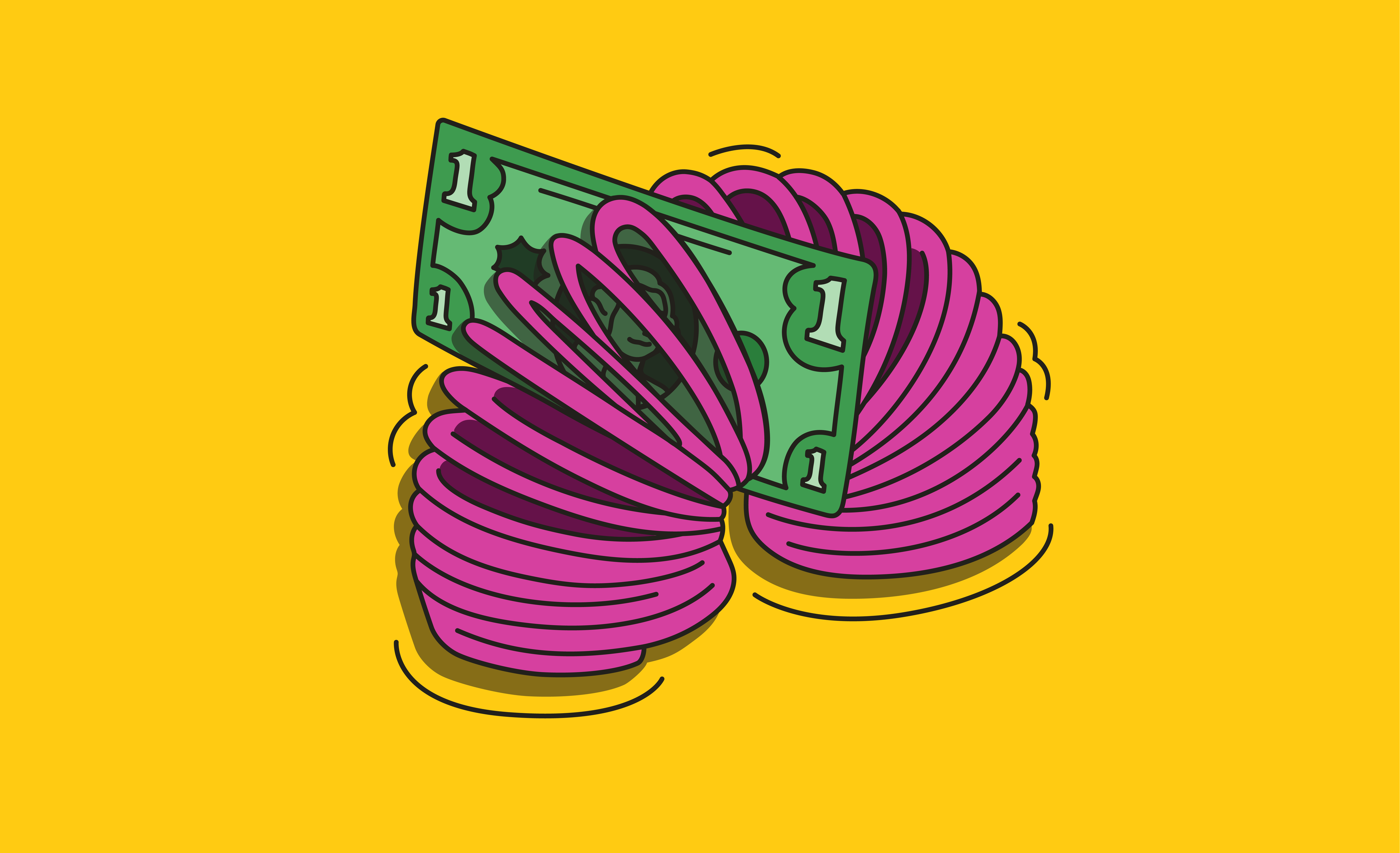From stocks and bonds to real estate and even collectibles, there are many ways to invest your money. Some are high risk and high reward, and others provide moderate but stable returns.
To choose the right investing vehicles for your portfolio, you’ll need to understand how they work and what they have to offer. In this guide, we’ll go over the most common types of investment vehicles and their pros and cons.
What Is an Investment Vehicle?
An investment vehicle is a financial account or product used to create returns. The term can generally refer to any container investors use to grow their money. Most often it includes stocks, bonds, and mutual funds, can carry high or low risk, and exists as part of a larger investment strategy.
Types of Investment Vehicles
There are several types of investment vehicles. Most investors focus on a few key types that best fit their current financial situation and goals. The diverse investment vehicles list below covers the kinds of vehicles you should know about and how they work.
1. Stocks
A stock is an ownership stake in a company. You can buy and sell stocks in units called shares. Your stake in the company depends on the type of stock, and on how many shares you own. When the stock price of the company increases, so does the value of your shares. Many companies also pay a portion of their profits, called a dividend, to stockholders.
Investing in stocks is one of the most accessible ways to build wealth over the long run. Be aware that a stock’s value can drop drastically and suddenly. However, a diverse portfolio of stocks is a reliable way to build wealth over the long term.
On a long-term basis, the S&P 500 (a stock index that tracks 500 large companies on U.S. stock exchanges) has returned an average of 10% per year over the last 100 years. As with other stock investments, it can also drop sharply in the short term. For that reason, most financial planners advise only investing in the S&P if you won’t need the money for a longer period of time.
Ways to Invest in Stocks
- Individual brokerage accounts
- Individual retirement accounts (IRAs)
The stock market can be extremely volatile from year to year, so you shouldn’t invest money you’ll need in the near future. Also, returns vary significantly depending on the stocks you choose. For that reason, full-time investors build portfolios of stock in a number of companies.
If investing in stocks isn’t your full-time job, consider putting your money in other financial vehicles that diversify your investment. For instance, some investors put their money into index-linked funds called ETFs to decrease their risk.
2. Exchange Traded Funds (ETFs)
An exchange-traded fund (ETF) is another type of investment fund. It’s similar to a mutual fund in that it pools investors’ money and allocates it across investments. The main difference is how it’s traded. ETFs are traded on stock exchanges, just like stocks. Mutual funds are purchased from the mutual fund issuer, and the price is set once per day.
ETFs are also more likely to be passively managed and tied to a stock market index, such as the S&P 500. Because of that, they often have lower fees than mutual funds. Since these investment vehicles are linked to a large portfolio of stocks, they also tend to perform more predictably over a long period of time than individual stock investments.
Some Popular ETFs
- SPDR S&P 500 ETF Trust (SPY)
- iShares Core S&P 500 ETF (IVV)
- Vanguard Total Stock Market ETF (VTI)
- Vanguard S&P 500 ETF (VOO)
Most investors choose one or two ETFs to invest in. If you’re not sure which ETF to choose, talk to a financial advisor.
3. Bonds
A bond is a debt obligation that you can think of as an IOU. Corporations, local governments, and the federal government issue bonds to raise money. When you buy bonds as a personal investment vehicle, you’re lending money to the bond issuer. In return, you’ll receive interest payments and get your money repaid in full on the bond’s maturity date. Because they provide consistent income, bonds are known as fixed-income instruments.
The difference between stocks and bonds is that with bonds, you don’t own part of a company. Bonds are more like lending money (to a company or the government) while stocks convey ownership in a business.
The Changing Bond Market
Bonds have traditionally been lower risk than stocks, and their value typically doesn’t drop as much as stocks during a bear market. In fact, bond returns can be positive when the stock market is down. That makes them useful for balancing out the volatility of stocks and building a more stable portfolio. However, over long periods of time, stocks have historically offered much greater returns than bonds.
4. Target Date Funds
A target date fund is a type of mutual fund created for a specific retirement year. The portfolio manager balances the plan’s asset allocation to optimize it for that retirement year. For example, if you invest in a target date 2060 fund, most of your money will be invested in stocks to start. As the years pass, more of your portfolio will shift to bonds to provide you with more stability closer to retirement.
How to Invest in Target Date Funds
- Open a brokerage account
- Choose a target date fund with your desired retirement year
- Deposit money and buy shares in that fund
If you don’t want to rebalance your portfolio yourself on an ongoing basis, a target date fund can be a useful investment vehicle. However, this hands-off approach isn’t for everyone, especially if you prefer to plan your own asset allocation.
5. Mutual Funds
A mutual fund pools investors’ money and invests it for them. Depending on the mutual fund, investments may include stocks, bonds, or a mix of the two. This means mutual funds aren’t inherently safe or risky. The level of risk depends on the investments in a specific mutual fund.
Since mutual funds typically invest in a large number of securities, they can help you build a diversified portfolio without picking stocks yourself. But some mutual funds have high expense ratios (fees), so it’s important to watch out for those.
Many of the most popular mutual funds also have a minimum investment requirement that can put them out of reach for beginner investors.
6. Certificates of Deposit (CDs)
A certificate of deposit (CD) is a financial product with a fixed term and usually a fixed interest rate. CDs are available through banks and credit unions. When you open a CD and deposit money in it, you’re agreeing to keep your money in the CD for the entire term.
CDs pay interest rates that are often higher than what’s available through savings accounts. And since you get a fixed interest rate, your CD won’t suffer if interest rates drop. CDs are considered a stable, conservative investment, but their potential to build your wealth over the long term is low compared to riskier investments like stocks.
Most CDs charge an early withdrawal penalty of a few months’ interest if you need your money before the term expires.
7. Cryptocurrency
A cryptocurrency is a digital asset that employs cryptography to store transactions in an immutable ledger called a blockchain. Most use a distributed network of computing devices to confirm transactions. While cryptocurrency started with Bitcoin, there are now thousands of cryptocurrencies.
Cryptocurrencies are extremely volatile. Some fortunate speculators have made huge returns on them, but far more have lost money. Crypto markets are also a hotbed for scams, since cryptocurrencies aren’t regulated like stocks are.
In fact, many investors would argue that speculation in cryptocurrency isn’t an investment at all. There are no hard facts about a cryptocurrency that can inform you as an investor. No corporate balance sheets, no government credit rating, and no intrinsic value beyond what other speculators think your ownership is worth.
8. Cash Equivalents
Cash equivalents are financial instruments that can be quickly and easily converted to cash. A financial product must have a maturity date within 90 days to count as a cash equivalent. For example, a 90-day CD is a cash equivalent, but a three-year CD isn’t.
Although cash equivalents have lower returns than other investment vehicles, they play an important role in your finances. For money you may need to access on short notice, such as your emergency fund, cash equivalents are the safest option. However, cash equivalents most often don’t keep pace with inflation.
9. Real Estate
In one form of real estate investing, you can purchase real estate with the intention of renting it out or selling it for a profit. This requires startup capital and knowledge of the area’s real estate market. Real estate investments come with significant profit potential if you have the right skill set. They also come with significant downside risk.
10. REITs
Another option that makes it easier for everyday investors to add real estate to their portfolios is a real estate investment trust (REIT). REITs hold ownership in income-producing real estate and trade on stock exchanges. They’re required to pay at least 90% of taxable income to shareholders, which means REITs offer relatively high dividend payments.
Note that dividends increase your taxable income, just like capital gains on the sale of stock. REITs can also be volatile, since their value is tied to the real estate market.
Benefits of Real Estate Investing
- Returns through price appreciation
- Passive income potential by renting
- Tax incentives (for a primary residence)
11. Collectibles
Collectibles, such as art, wine, and sports memorabilia, are considered alternative investments. Most people buy collectibles because they’re interested in them, but there are also investors who buy collectibles in the hope that they will appreciate in value.
Unless you have knowledge of a specific type of collectible, you’re better off sticking to more traditional investments. It’s hard to predict which collectibles will increase in value, and the market is less well-regulated. Selling collectibles is also more complicated than selling other investment vehicles, such as stocks and mutual funds.
12. Commodities
A commodity is a basic material or good. There are two types: hard commodities and soft commodities.
- Hard commodities are natural resources, including gold, silver, oil, and natural gas.
- Soft commodities are agricultural products, including wheat, cattle, and sugar.
For practical purposes, there’s little difference in the way you’d invest in either of these vehicles. The key point here is that commodities investing is best for those who are true experts in a particular commodity or industry.
What Are the Best Investment Vehicles...
The best investment vehicles are those that fit your stage of life, goals, risk tolerance, and the amount of time you have before you’ll need to spend the money. To choose investments, first think about your financial goals, and then match up those goals with appropriate investments.
...For Long Term Goals?
For long-term goals (10+ years), such as retirement and college funds for young children, prioritize investments with growth potential. Consider using a target date fund for retirement, or a few ETFs or low-cost mutual funds to put together a diversified portfolio. As you get closer to using the funds in your portfolio, decrease your portfolio risk by shifting towards bond ETFs and mutual funds and away from stock ETFs and funds. .
Real estate is another option to consider, either through owning properties or investing in REITs. However, if you choose to own a property, liquidity can be an issue. You can easily sell half of a stock portfolio if you suddenly need the money. You can’t do that with property ownership.
Tax Advantages
When saving for retirement or college, you can also reduce your tax liability with tax-advantaged accounts. Options include 401(k)s, Roth IRAs and IRAs for retirement, and 529 plans for college savings.
Keep in mind that the tradeoff with these accounts is that they limit your access to funds. You typically need to wait until age 59 1/2 to withdraw from retirement accounts, and you’ll need to use funds in 529 plans for college costs to avoid penalties.
... For Short Term Goals?
For goals that are coming up more quickly, such as buying a home in the next one to two years, stick to investments that can’t decrease in value. Cash equivalents are the safest option when you’re saving for the short term. If you’ll need to use your money in the next three to five years, consider investing in high quality short term bonds.
Building a Balanced Investment Portfolio
With so many types of investment vehicles available, it’s important not to put all your eggs in one basket. Diversification, meaning owning a mix of assets, reduces risk. For example, if your portfolio only consists of a few stocks, you’ll take a big loss should any of those companies fail.
Although mutual funds and ETFs are seen as easy ways to build a diverse portfolio, keep in mind that owning one of these doesn’t always mean you’re diversified. It’s the investments in the mutual fund or ETF that determine how diverse it is.
Want to track your investment portfolio? Monarch Money provides one convenient place to keep track of your entire investment portfolio, your net worth, and your cash flow - all in one place.






